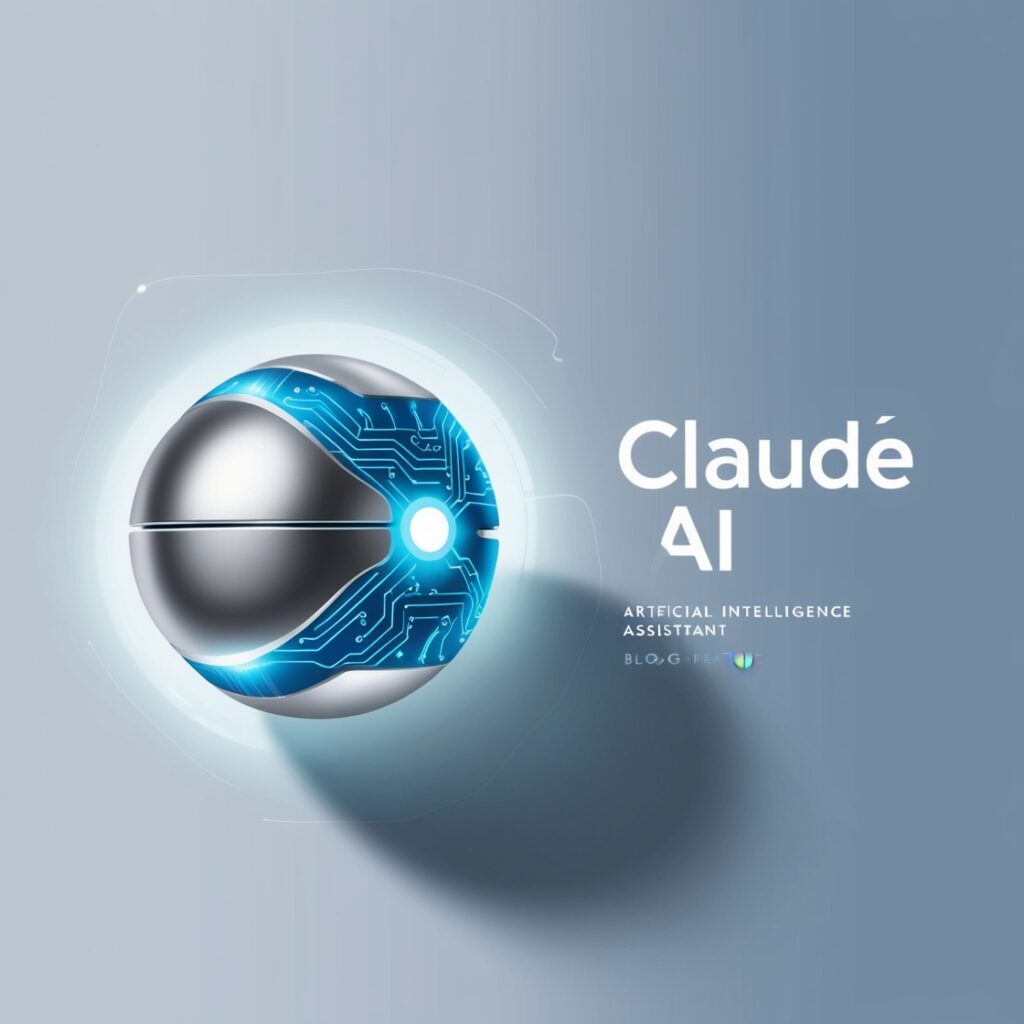Claude AI: Revolutionizing Human-Machine Interaction
Artificial intelligence has revolutionized several industries over the last decade, with significant advancements in natural language processing (NLP) tools like Claude AI, developed by Anthropic. Claude AI represents the next wave of generative AI models, offering an advanced alternative to OpenAI’s ChatGPT. This blog explores Claude AI’s unique capabilities, features, ethical considerations, and the potential future of AI-powered language models. Claude AI: Revolutionizing Human-Machine Interaction
1. What is Claude AI?
Claude AI is a large language model (LLM) developed by Anthropic, a company founded by ex-OpenAI employees. Claude is designed to improve human-computer interaction by generating coherent and contextually aware text, enabling users to ask questions, draft content, summarize documents, and more. It can perform many of the tasks typically associated with generative AI models, such as conversation, content creation, coding assistance, and decision-making support. The latest release, Claude 3.5, has brought improved conversational abilities, higher accuracy, and better performance across tasks.
2. Key Features of Claude AI
Claude AI differentiates itself from other language models through several cutting-edge features:
a) Advanced Conversational Abilities
Claude AI excels in maintaining context in long, nuanced conversations. While earlier AI models often struggled to maintain a coherent conversation over extended text inputs, Claude’s memory-like capabilities allow it to follow complex narratives, user intentions, and context over long exchanges. This makes it particularly useful in customer service, technical support, and real-time collaborations.
b) Customizable Personalities
Users can customize Claude AI’s conversational style or tone to suit their needs. Whether users prefer formal communication, friendly tones, or creative writing, Claude AI adapts accordingly. This level of personalization increases its utility in fields like education, healthcare, and customer interaction.
c) Ethical AI Development
Anthropic emphasizes creating ethical AI systems, and Claude AI was developed with safety in mind. The model is designed to align with human values and safety protocols, reducing the likelihood of harmful or biased outputs. Claude AI’s underlying architecture incorporates robust moderation filters to mitigate the risk of inappropriate responses, making it more suitable for diverse industries.
d) Ease of Integration
Claude AI can be easily integrated into a variety of platforms. It supports a wide range of application programming interfaces (APIs) for integration into websites, applications, and other digital products. This ease of deployment makes Claude a versatile tool in industries like e-commerce, SaaS platforms, and digital marketing.
3. Use Cases of Claude AI
Claude AI is being adopted across several industries due to its adaptability and range of applications:
a) Content Creation
In the publishing world, Claude AI assists content creators by drafting blog posts, news articles, social media posts, and even poetry. Its ability to generate high-quality, coherent text makes it a valuable tool for writers, marketers, and journalists looking to streamline their writing processes.
b) Education
Claude AI is being increasingly used as an educational assistant. It helps students by answering questions, explaining complex topics, and summarizing large bodies of text. Teachers can also utilize Claude to generate lesson plans, quizzes, and study materials, enhancing educational productivity.
c) Customer Service
Many companies use Claude AI for automating customer interactions. Claude can understand customer queries and provide detailed responses, often without human intervention. This use case improves efficiency in sectors like retail, finance, and telecommunications.
d) Coding and Software Development
Claude AI offers robust code assistance to developers. It can write, debug, and optimize code across several programming languages. Its ability to recognize errors in the code and suggest improvements helps software engineers focus on more critical, high-level tasks.
4. Comparison: Claude AI vs. ChatGPT
While both Claude AI and ChatGPT belong to the same category of language models, they possess distinct features that set them apart:
a) Performance
ChatGPT is renowned for its conversational abilities, but Claude AI is praised for maintaining context over extended conversations. Its conversational memory allows users to engage in long, coherent discussions without loss of previous context. This makes Claude more suitable for complex tasks that require a deep understanding of user input over time.
b) Ethical Safety Measures
While OpenAI and Anthropic both emphasize ethical considerations, Claude AI is built with more robust guardrails to prevent harmful and inappropriate outputs. Anthropic’s focus on AI alignment and safety ensures that Claude adheres more closely to human values.
c) Cost and Integration
Claude AI offers a range of integration options and pricing plans, making it competitive in the market. Its easy API integration and scalability make it a versatile choice for companies looking to incorporate AI into their operations.
5. Claude AI’s Ethical Framework: AI Alignment and Safety
Claude AI’s development is grounded in Anthropic’s core mission: creating safe and beneficial AI systems. AI alignment—ensuring that AI systems behave in ways that are beneficial to humans—is central to the development of Claude AI. Anthropic has taken extra steps to ensure that Claude’s actions align with human values and safety protocols. This involves rigorous training methods to minimize bias and prevent the generation of harmful content.
To ensure ethical operation, Claude AI incorporates the following:
a) Moderation Filters
Claude AI’s moderation system scans user input and output to filter out inappropriate or harmful language. This reduces the risk of generating offensive, misleading, or biased content, making Claude a more reliable AI for both casual users and corporate environments.
b) Human Feedback
Anthropic emphasizes continuous learning through human-in-the-loop systems, where human feedback is actively integrated into the AI’s training. This process helps improve Claude’s performance and ensure that it responds ethically and accurately.
c) Open-Source Contributions
Claude AI’s underlying models contribute to the broader AI community by releasing some of their research publicly. This helps foster a community-driven approach to improving AI safety and ethics.
6. Challenges and Limitations
Despite its many strengths, Claude AI faces several challenges that are inherent in generative AI technologies:
a) Contextual Limitations
While Claude AI has improved conversational memory, it is not perfect. There are instances where the AI may struggle to maintain the context over extremely long conversations, especially if inputs are vague or ambiguous. Enhancing its ability to parse complex, multi-turn dialogues remains a priority for future iterations.
b) Dependence on Data
Claude AI, like all AI models, relies heavily on its training data. If biased or incomplete data sets are used, there is a risk that Claude’s outputs could reflect those same biases. Although Claude has built-in safety mechanisms, there is always a concern about unintentional bias in its responses.
c) Resource Intensive
Training and deploying large language models like Claude AI require significant computational resources. This can pose limitations for smaller organizations looking to adopt such technologies. However, Anthropic is working to make Claude AI more resource-efficient and accessible.
7. The Future of Claude AI
The future of Claude AI looks promising as Anthropic continues to innovate and address current limitations. Several potential developments could further enhance Claude AI’s capabilities:
a) Enhanced Multimodal Abilities
In the future, Claude AI could evolve to handle multimodal inputs, combining text with other forms of data, such as images and videos. This would greatly expand its use cases in industries like e-commerce, healthcare, and media.
b) Real-Time Learning
Anthropic is also working on ways to allow Claude AI to learn and adapt in real-time. This would make it possible for Claude to update its knowledge base without requiring manual retraining, further increasing its utility across various industries.
c) Increased Accessibility
As generative AI becomes more ubiquitous, efforts will be made to make Claude AI more accessible to smaller businesses and individual users. Lowering the cost of integration and improving resource efficiency are key steps toward achieving this goal.

Conclusion
Claude AI stands at the forefront of the AI revolution, offering advanced conversational abilities, ethical safeguards, and adaptability across industries. With its focus on safety, personalization, and long-term context retention, Claude AI sets a new standard in the world of AI-powered language models. While there are challenges ahead, the future looks bright for Claude as it continues to evolve, offering more intuitive and responsible human-AI interactions.
As industries from education to customer service embrace AI, Claude AI promises to be an essential tool for transforming workflows, improving efficiency, and fostering ethical AI use. Whether you are a content creator, software developer, or business leader, Claude AI offers unique opportunities for innovation and productivity.




